Day 5, Cu Chi: Vietnam War Tunnels & Dare Food Adventure
- Rick

- Jan 3, 2019
- 8 min read
Updated: Sep 28
Previous:
The half-day Cu Chi Tunnels guided tour started at 8.30am and would last until 1pm — well, supposedly. For only US$5, it came with "extra" agendas on the itinerary that was not totally unexpected. A mini-van picked us up from our guest house after breakfast. There were 11 tourists, including us, being packed into the small van. The air inside the van was rather chilly on the way to Cu Chi.
The first stop was at a Vietnamese handicraft factory, about an hour out of Ho Chi Minh City, which specialised in lacquer-wares. It was said that the factory was setup after the Vietnam War for the handicaps to earn their livings, but after almost 35 years, the handicapped workers had mostly retired and were replaced with able-bodied ones. However, it was the handicrafts that were more appealing.

We were introduced to the decorating processes on paintings and big vases using either mother-of-pearls or egg shells. These arts were labour-intensive and the workers were very skillful. After walking through the factory, we were led into a showroom where hundreds of high-quality lacquer-wares were on display and for sales. They were really beautiful.
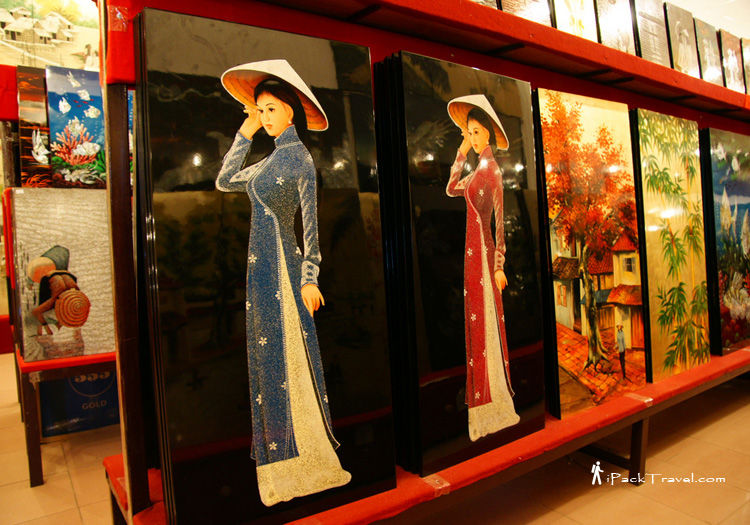
I would not mind getting a couple of them for my room but the prices were somewhat on the high side — and including commissions for the tour guides (but that was how tour guides earned their livings, they earned nothing from the US$5 tour package price). Souvenir shops in Phạm Ngũ Lão or Central Saigon would sell similar handicraft items at cheaper prices though but not all items here could be found in those shops.

The next destination, after the handicraft factory, was the main objective of the trip — the Cu Chi Tunnels that were dug during the Vietnam War. There were actually two tunnels in Cu Chi that were opened to tourists, one in Bến Đình and the other one in Bến Dược. We arrived at the Bến Đình Tunnels, which was modified after the war to accommodate the large sizes of European and American tourists. Most of the tunnels were unearthed, exposed and enlarged — and less authentic, of course.

(I had been to Bến Dược five years ago and there were a lot of differences between the two sites. Bến Dược would have been be a better option for Asian travellers.)
Ticket to Cu Chi Tunnels was not included in the tour package, so we paid 75.000 dongs per person at the entrance. The tour started with a video presentation on how the Cu Chi Tunnels was first built and expanded into a large-scale anti-American underground network. It also explained how the Viet Cong (Communist North Vietnamese Army) were able to survive in the tunnels and used it to escape from American soldiers. The narrations were actually skewed in favour of the Viet Cong and criticised the South Vietnamese Army and American soldiers of their "atrocities" during the Vietnam War.

After the video show, we were shown a few tunnels but they were crowded with tourists. The tour guide decided to skip to the next few stations and to return later. At one station, we were shown several types of booby trap, developed by the Viet Cong, and how each of them worked.
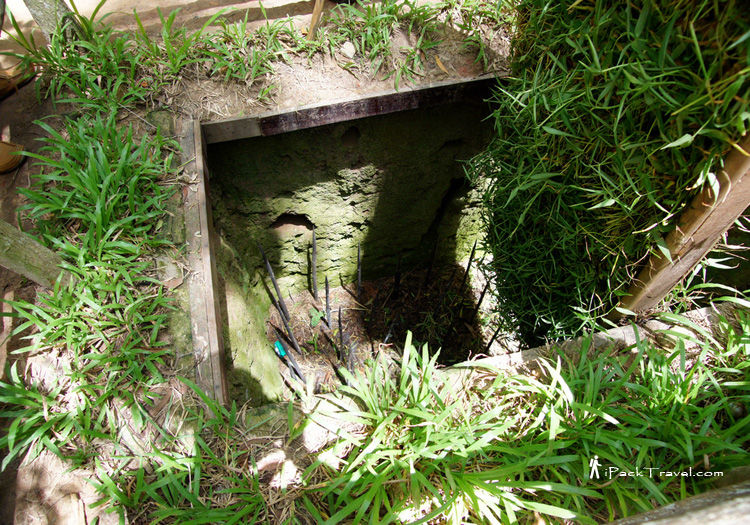
There were also other displays that showcased the Viet Cong's uniforms and their primitive bomb-making process using mannequins. There was a firing range for tourists to try firing some real guns and ammunition at some costs. We spent about half an hour at the range as some tourists in our tour group wanted to try the guns.

After leaving the range, we were shown a hut where its occupant made some rice papers and dried them under the sun. Another hut had a shoemaker that made different sizes of sandal out of black rubber sheets. Then, we were back at the main tunnels, which we had skipped earlier. Noticed that the entrance had been enlarged to accommodate a full human height and the walls were cemented?
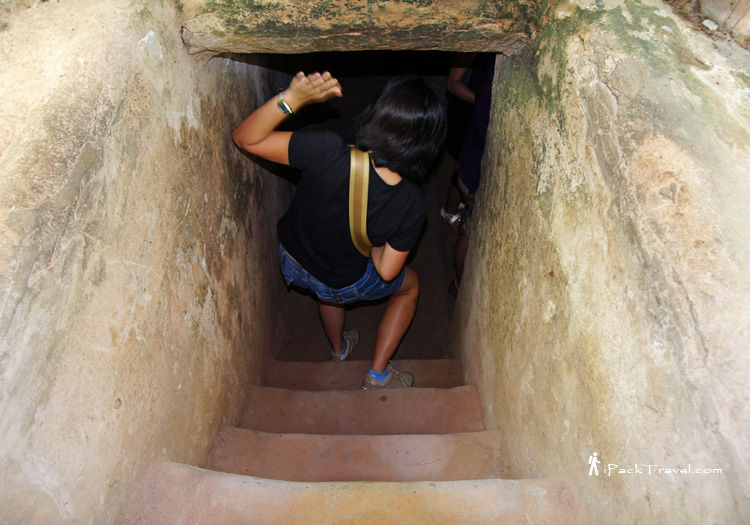
In some parts of the tunnels, we had to duck-walked to get around. It was really muscle-straining to those who seldom exercise!
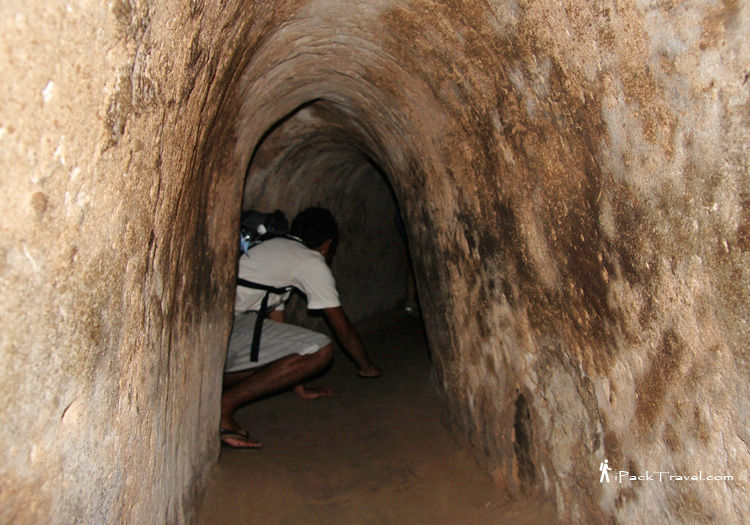
However, unlike in Bến Dược, we were not asked to find a concealed entrance and attempt to get into the tunnel through that small entrance, which I had tried. I had always believed that to be the main highlight of the Cu Chi Tunnels experience!
Leaving the tunnels, we were shown to a kitchen in an exposed section of a tunnel. A lady, dressed in Viet Cong uniform, was making some tapioca snack. We were seated at a table outside the kitchen and served boiled sweetened tapioca with tea. It might be simple food to most tourists from Europe or western countries, but sweetened tapioca was nothing new to South-Eastern Asians, including Singaporeans. Such was the food that the Viet Congs consumed during the Vietnam War.
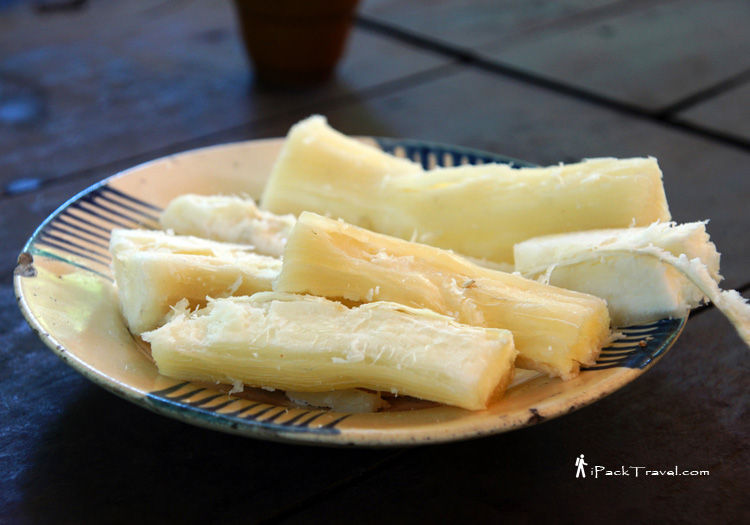
After the snack, we left the Cu Chi Tunnels and returned to Ho Chi Minh City. The air inside the van had turned warm, making it an uncomfortable journey back. It was after 1pm when we reached Saigon but we were driven to a shop that sold local products. It was another of those "extra" agendas. The shop attendants tried to sell their goods to our tour group, but we just loitered around until it was time to depart.
We were all hungry as it was way past lunch time, so we declined to get back to the mini-van for the next destination, the War Remnants Museum. I had noted earlier the name of the street we were at and the Southern Vietnam Women Museum, just opposite the shop, served as a good landmark for me to know exactly where we were. And we were pretty close to a restaurant that I wanted to try. It would otherwise be too far off from Central Saigon if we were to locate it ourselves. But since we were in the vicinity, we might as well go for it, so I led our small group there.
We walked down Võ Thị Sáu, searching for a place to have lunch. It took us almost 15 minutes before we saw a shop selling noodles and walked in. A lady approached us and said "Bún bò" and other things in Vietnamese. Knowing that she meant Bún bò Huế, we agreed readily even though we could not understand what she was saying completely. When the Hue-styled beef noodles were served, we saw that there were extra ingredients, like ham and spicy fish cake, in it. The lady was actually asking us if we wanted extra ingredients, which we did not mind as we were very hungry. Anyway, it was only 30.000 dongs per bowl.
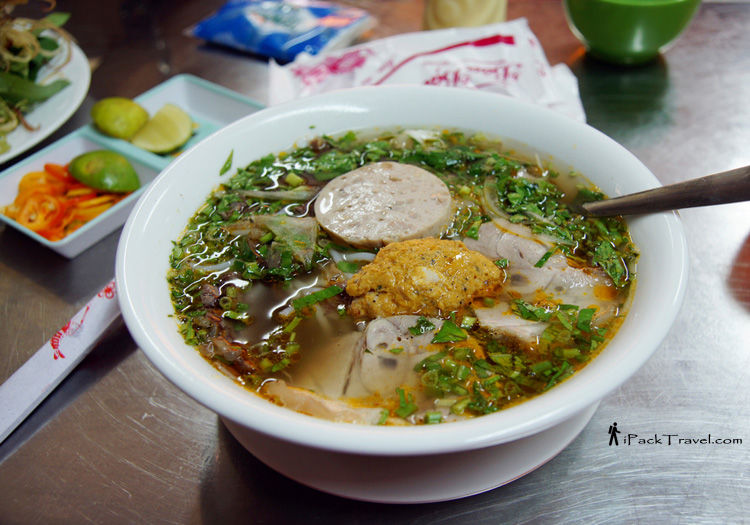
The lady also placed some dessert on the table — a kind of kueh (traditional cake) with corns in it and wrapped in leaves that were made into small cubic cups. We tried a piece each. Not too sweet but not tempting to have another one also. We only have to pay for those we ate. We also ordered some sweet coconut dessert in small bowls and pure corn milk in bottles. I liked the corn milk.
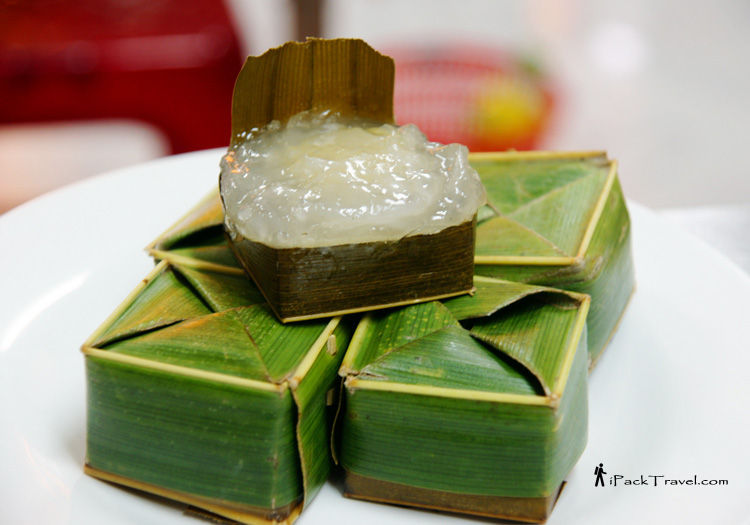
It was 3pm after lunch as we made our way to Huỳnh Tịnh Của Street, following a map. It was quite some walking. Half an hour later, we came to a shop that showcased several jars of wine with various types of snakes — such as cobra, python, grass snake, etc — soaked in them. Some jars even contained ant-eaters, crows, monitor lizards, etc. The big jars had different price tags on the lids. Jars containing more animals were priced higher.
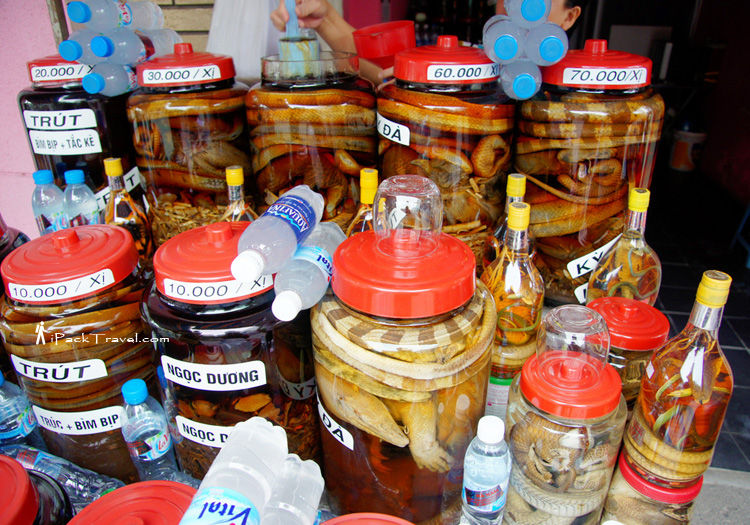
Eager to try the Vietnamese rượu rắn, or snake wine, I pointed at the "40.000/Xị" jar and bought 250 ml (half a small mineral water bottle) for 40.000 dongs. The others looked at me with dread faces and exclaimed that they would not touch that snake wine.
Apart from the trứng vịt lộn (duck-embryo egg) that they had tried on Day 1 and Day 2, the little wine was just a prelude to what were coming up next. The devil in me was just about to be awaken! They had no idea why I was grinning while leading the way.
Ten minutes later, we were at our destination — Huong Dong Restaurant. It was said that this restaurant served weird food like field mouse, python, coconut worms, etc, but we got a shaking head from the waitress instead when I pointed at several interesting items on the menu. Communication was difficult and we could not figure out whether she was trying to tell us that the dishes were "not available that day" or "not selling any more”.
Anyway, I settled for some milder dishes, two grilled frogs and a plate of eels in banana leaves, with nods from the waitress. It was interesting to note that eel was classified as "snake" on the menu. We were still quite full from lunch and only wanted to order the dishes to try, without rice. The waitress seemed surprised that we did not want rice. It was only 4pm and way too early for dinner.
Frogs and eels were no strangers to us but when our orders were served, the presentation of the dishes scared the wits out of my friends. The eels were chopped into chunks with its skin still on, wrapped in banana leaves and grilled. A layer of oily fats coated the eel meats when the banana leaves were peeled. Taste of the meat was not bad but the oily layer was quite horrid. Shren exclaimed that she had not known unagi (Japanese word for eel) to have a snake-like shape. The wonderful unagi had always been sweet and flat to her — which reminded me that Japanese kids used to think that chickens looked like drumsticks.
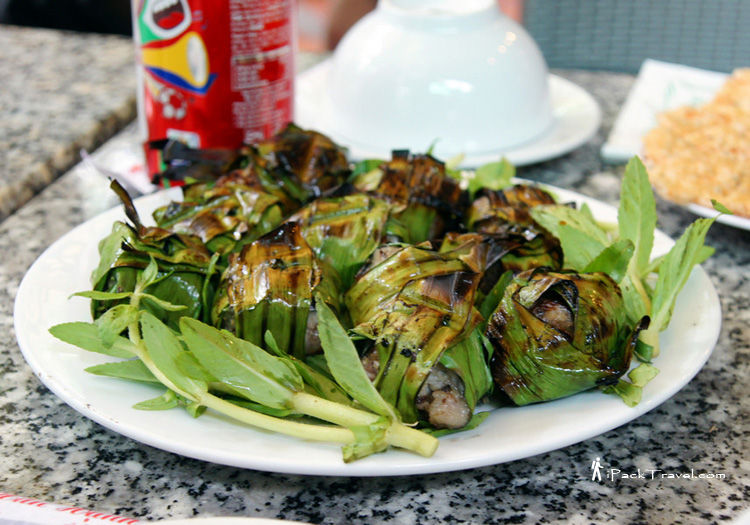
The grilled frogs were served in whole — totally uncut and not skinned. This time, Joanne shrieked. Frogs had always been served all chopped up and skinned in many places, including Singapore. Most western countries served only skinned frog legs as delicacy. It was the first time all five of us had seen whole frogs being served. The waiter, who served the dish, amused us by flipping one of the frogs onto the other one, as though they were having sexual intercourse.

I reached for one of the frogs, tore it to pieces and handed them out to the rest. The crispy skin was not that tough to chew as initially expected and the white flesh was slightly chewy. Overall, it was a little spicy and salty from the seasoning on the skin, but not bad tasting.

Though the two dishes were not considered as weird food, their presentations sure added some excitements to the experience. As usual, I got to eat larger portions of both dishes — being fearless sure had advantages, or sometimes, disadvantages. I wanted to order another serving of the grilled frogs but the others stood up and walked away.
After leaving the restaurant, we walked down Pasteur Street towards central Saigon. We spent about an hour to shop in an Adidas shop which had a promotion going on. I bought a t-shirt. The sky turned dark as we walked further down the road. A while later, we took a short rest in a KFC outlet that occupied three storeys but we did not eat much.
At 9.30pm, we left KFC and decided to head back towards our guest house. We came across a co-op mart on the way and went in to buy some local products such as rice papers and bottled fish sauce. It was here that I found some uncooked silkworms in the frozen goods department. I asked the staff to help me pack 30g in a plastic bag and happily paid 1.500 dongs for it. It was such a fruitful day for me — but dreadful for my companions.

Back in Phạm Ngũ Lão, some of us felt hungry and packed some food from a mobile vendors along the street. We bought some packets of Mì xào bò (beef fried noodle) and went back to our guest house to consume the food.

Cherry, a staff at the guest house, was kind enough to cook the silkworms, with butter, for us. We enjoyed our fried noddles and also tried the fried silkworms — it had a funny taste that was hard to describe. All, except Joanne, tried the silkworms but it was still me who finished the rest.
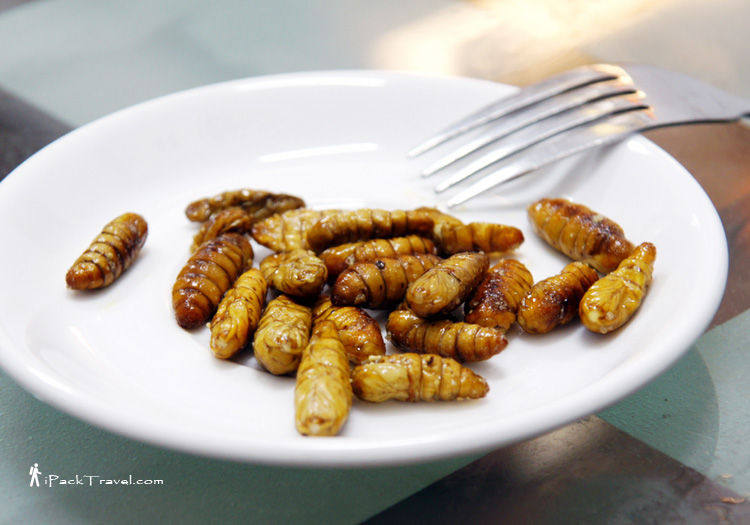
No one really wanted to try the snake wine that I bought in the afternoon. After finishing the fried noodle, I brought the wine back to my room and sipped it slowly. It was a very strong alcohol that overpowered any tastes that might have existed but yet it has a funny gamy after-taste — like a furred animal that had not bathed for days.

Nevertheless, the high alcohol content was good for inducing sleep. I slept through the night soundly.
Next:



Comments